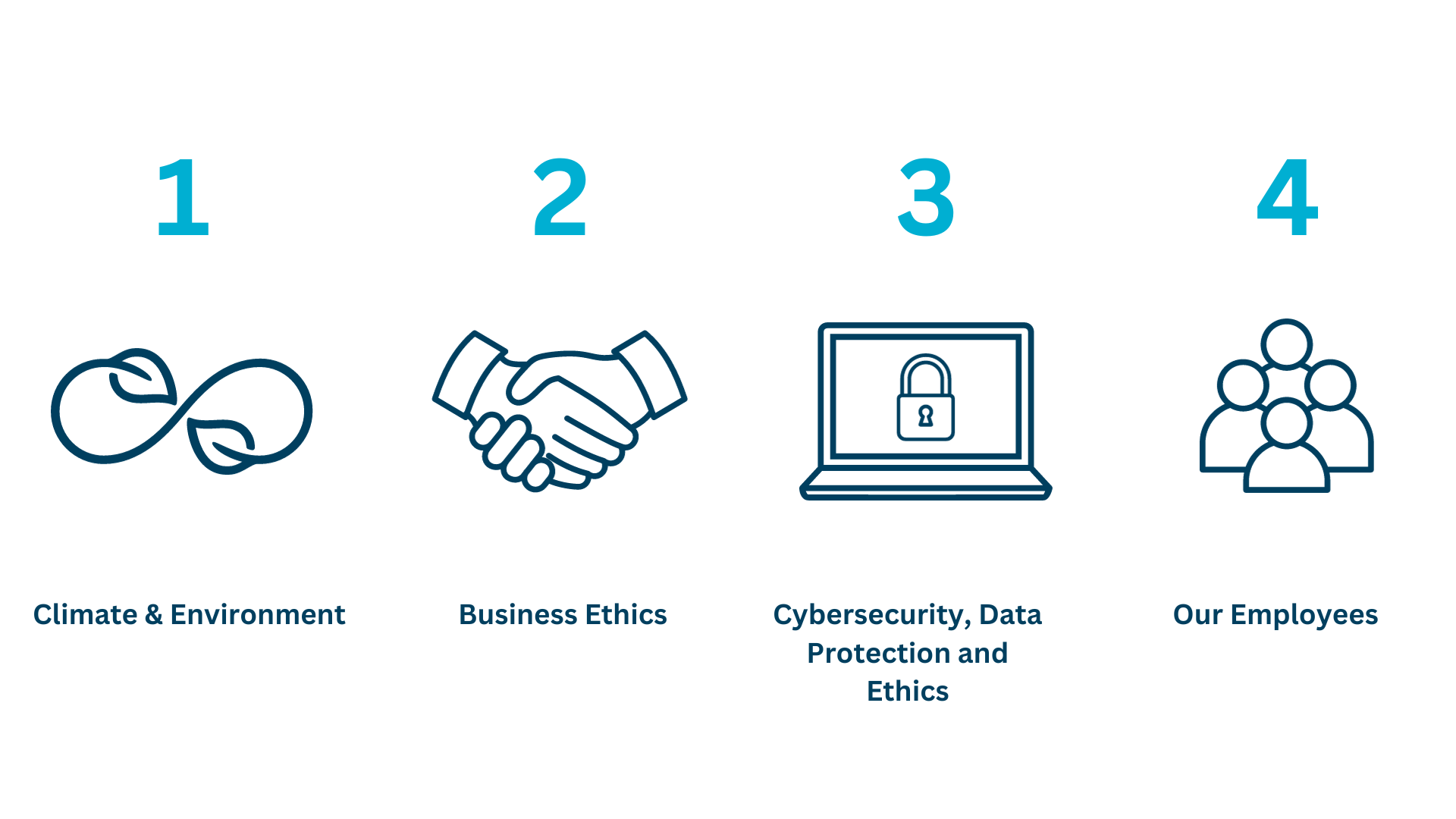
We believe that digitalization creates a richer, safer and more sustainable society. By taking advantage of digitalization, we want to enable our customers to provide services to individuals regardless of income, age, gender, ethnicity, disability, religion, sexuality or educational level.
Banqsoft is part of the KMD Group which is owned by NEC Group, and we are all part of a globalized world. This means that our responsibility goes beyond national borders. That's why we work with our suppliers and our customers to meet the UN Global Compact's 10 principles for sustainable development.
OUR 4 SUSTAINABILITY THEMES
In Banqsoft, we have defined 4 sustainability themes that are essential for our business, for our customers and for society:

Our Commitments
Banqsoft is committed to a number of international standards and guidelines for human rights, labour rights, anti-corruption and environmental responsibility and is certified under various ISO standards. These include:
- UN Global Compact
- United Nations Universal Declaration of Human Rights
- UN Guiding Principles on Business and Human Rights
- The core conventions of the International Labour Organisation (ILO)
- OECD Guidelines for Multinational Enterprises
- Banqsoft Certifications
Our Policies
KMD Village
Banqsoft owner KMD has been an integral part of Danish society since 1972. With deliveries of systems such as Easy Account, E-boks, Borger.dk and Digital Signatures, society has touched with KMDs digital infrastructure solutions on a daily basis. Systems that help ensure payment of salaries, contact to home care, calculation of heating bills, or other of the many hundreds of functions that our systems perform for public authorities and private companies. Our systems and solutions contribute to a stronger and safer digital society.
Banqsoft is a strategic Business Area within KMD Group, delivering services to the Financial industry.
Since 2011, KMD has worked with the UN Global Compact's 10 principles and 17 Sustainable Development Goals as an integrated part of our work processes.

KMD group IT solutions and services have a broad outreach effort. As an example, KMD Village imagines our presence in many different parts of the life of a person living in Denmark.







